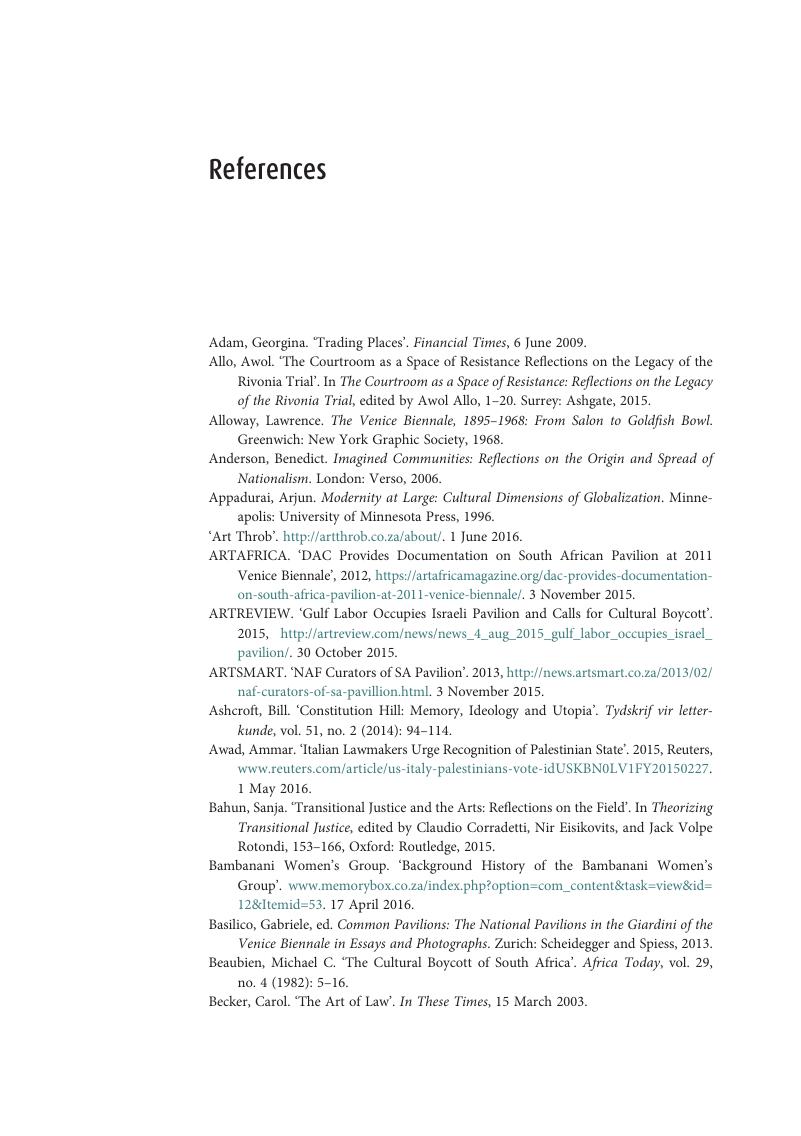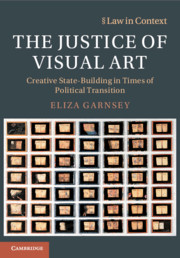Book contents
- The Justice of Visual Art
- The Law in Context Series
- The Justice of Visual Art
- Copyright page
- Dedication
- Contents
- Figures
- Acknowledgements
- Abbreviations
- 1 Introduction
- 2 Art and Justice in Times of Transition
- Part I Recognising Transitional Justice in the Nation State
- Part II Representing Transitional Justice on the Global Stage
- References
- Index
- References
References
Published online by Cambridge University Press: 17 October 2019
- The Justice of Visual Art
- The Law in Context Series
- The Justice of Visual Art
- Copyright page
- Dedication
- Contents
- Figures
- Acknowledgements
- Abbreviations
- 1 Introduction
- 2 Art and Justice in Times of Transition
- Part I Recognising Transitional Justice in the Nation State
- Part II Representing Transitional Justice on the Global Stage
- References
- Index
- References
Summary

- Type
- Chapter
- Information
- The Justice of Visual ArtCreative State-Building in Times of Political Transition, pp. 210 - 226Publisher: Cambridge University PressPrint publication year: 2019
References
References
Archivio Storico delle Arti Contemporanee (ASAC), Venice, Italy
Constitutional Court Archives, Johannesburg, South Africa
South African History Archives, Johannesburg, South Africa

